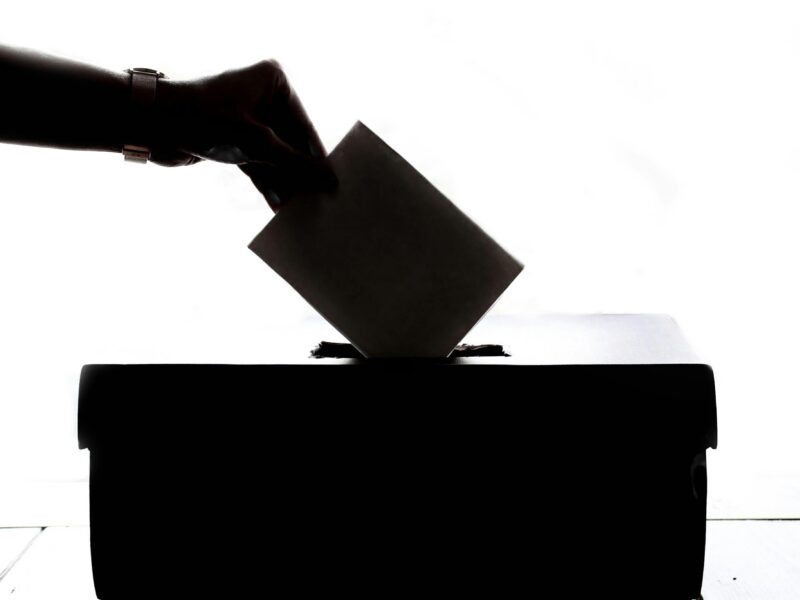1/5/21
Quick Note: This is one of the predictions referenced in my “What Did I Learn from My Predictions?” post. It has not been changed, formatted, or further proofread from the document that I sent to my friends & family and pinned on my private Twitter.
Summary/TL;DR:
- Raphael Warnock and Jon Ossoff are highly likely to win the Georgia runoff election and deliver control of the U.S. Senate to the Democratic Party
- Due to a lack of quality polling data, this race is a harder race to predict, but some certainty can be gained through campaign strategy assessments and analyzing early vote data
- The Republican path to victory on Election Day is plausible but has likely narrowed to carrying over 60% of the Election Day vote despite increased Democratic in-person canvassing efforts
Supporting Memorandum:
Introduction:
The Georgia U.S. Senate runoff election has maintained odd dynamics from the beginning. It started with President Trump’s refusal to concede the election and claiming fraud in Georgia and other battleground states in an attempt to overturn the will of the voters (i.e., pull off a coup). The dynamics then get further complicated when you try to account for the decrease and change in the electorate that is certain to happen.[i] For example, in the 2008 U.S. Senate runoff, there was a 43% drop in ballots cast. In that race Democratic votes dropped by 48% and Republican votes dropped by 34%, which paved the way for an easy Republican victory and denied then President-elect Obama a 60th vote in the U.S. Senate.
Adding to the confusion, the 2020 U.S. Senate general election performed differently than the presidential. Sen. David Perdue, not Donald Trump, received the highest number of Republican votes by ~780. That would not have been enough to overcome President-elect Biden’s 11,779 vote advantage, but it almost prevented a runoff election with Ossoff, who received almost 100,000 fewer votes than Biden. The collectively votes in the jungle primary that nominated Rev. Raphael Warnock and Sen. Kelly Loeffler broke on party lines in similar fashion to the Ossoff-Perdue race.
Based on these moving parts, it became very apparent that the runoff was going to be a different race than the general. As a result, the best way to predict this race is to perform a strategic assessment of the campaigns and compare that to the trends in the early vote. After looking at these factors, both Warnock and Ossoff are in strong position to win.
Strategic Challenges in the Runoff Election
Overall, it was extremely clear from the beginning of the runoff that Democrats and Republicans needed to solidify turnout and prevent their respective side from having a faster drop in turnout from the other. However, each party had separate paths to achieve that goal.
Democratic Strategic Challenges:
The Democrats had two major strategic problems. First, Warnock and Ossoff had to address their underperformance compared to Biden, as noted above. From my perspective, this appeared to be a problem with the candidate’s messaging and delivery. For Ossoff, this manifested as messaging missteps for reasons that will be discussed below. For Warnock, this manifested as a lack of messaging. However, Warnock was always playing for a runoff and his messaging absence in the general made sense.
Second, and relatedly, Democrats had to sure up their turnout efforts. Fortunately for Democrats, Biden’s victory indicated a high number of Democratic and potentially Democratic-leaning independents available to win in the runoff. Focusing on the Ossoff race, Biden outperformed Ossoff by over 63,000 votes in Democratic areas of the state compared to over 35,000 votes in Republican areas. Ossoff’s race also had ~53,000 more third-party votes than Biden’s. Given that there was only a ~46,000 drop in votes between the two races, this indicated that there are nearly 116,000 votes for Ossoff to address before even needing to focus on the Republican areas.
This setup two clear objectives: 1) create messaging that appeals to more Democrats and Democrat-leaning independents and 2) contact and improve the quality of contacts in turnout operations. Stacey Abrams, either through similar analysis or informed intuition, came to a similar conclusion when she stated the race would be about “education, letting folks know about this election” and turnout.”[ii]
Republican Strategic Challenges:
At the outset of the runoff, Republicans had a simpler job. Given that Perdue already beat Trump’s turnout and Democratic history of dropping votes in the runoff, they simply needed to replicate as much as possible their general election turnout. Despite narrowly losing the presidential race, it would likely be enough to defeat the Democrats now. However, this got quickly complicated by Trump. His refusal to concede and attempted coup created mixed messaging to the Republican voters. This has caused both Republican candidates to walk a fine line in messaging without conceding that Trump lost or by looking too self-serving by not “fighting” for Trump. On top of that, both candidates had to address insider trading allegations and have had moving positions on the Covid-relief package.
Even though the Republicans should have had one objective, they ended up having two: 1) navigate messaging and scandals to keep Republican voter enthusiasm up and 2) replicate the general election turnout as much as possible.
Strategic Execution:
This is where the runoff begins to diverge. The Democrats have had a much easier time executing their strategy than the Republicans, and this has built an advantage.
Democrats fix messaging and resume in-person canvassing, safely:
Focusing on Ossoff again, there has been marked improvement in messaging and delivery from the general election to the runoff. In the general, Jon Ossoff’s message focused on corruption as a unifying motif to present his policy positions and attack Perdue. While there is a logic to this approach, it did come with significant drawbacks. As the coronavirus continued, the corruption issue fell in importance to the economy, the pandemic, and social justice. Corruption may have been Ossoff’s strongest issue, but it did not move the needle with voters too much. Ossoff also delivered this message in a direct-to-camera, over soft music, and scripted style ads that had been popular in politics historically, even as recently as the late 2000s. But, when compared to modern content formats, it looks stiff, self-serving, and ultimately untrustworthy. Seemingly overnight in the runoff, Ossoff focused his message sharply on healthcare, jobs, and social justice. He changed his ads to a more candid format that showed him giving speeches to crowds and featured voter testimonials and endorsements, mainly from former President Obama. When Ossoff did go direct-to-camera in the runoff, he spoke about his experience with the late Rep. John Lewis and used real settings like the Edmund Pettus Bridge or active city blocks in Georgia. This combination provided more life and authenticity to the candidate. This analysis is more opinion based; therefore, I encourage you to compare ads as well:
Here is an Ossoff ad from before the runoff:
Here is one of his ads that started running before early voting began:
Warnock’s ads and message have been consistently solid and focused and that has continued and gained more scale during the runoff campaign.
The Democrats also returned to in-person canvassing after previously using virtual organizing during the general. The Republicans did not hold back on in-person canvassing in the lead up to November and that is likely a contributing factor to its down-ballot success despite losing the presidency.[iii] In mid-December, the Democrats touted having over 20,000 volunteers signed up for door-knocking, phone calls, and texts.[iv] While it is to be determined whether this will be enough in the face of an also strong Republican operation, adding more in-person canvassing is a key success factor that the Democrats didn’t pass up.
Republicans stumble on messaging while likely remaining strong in turnout operations:
Overall, Republicans stuck to messaging aimed at their opponents looking “radical”, “socialist”, and “out of step with Georgia”. While these messages lack crossover appeal, it does appeal to the Republican base. However, the Republicans have had problems in keeping the race focused where they want. David Perdue and Kelly Loeffler have both had to address scandals about insider trading and used paid advertising to do so, which is a clear indicator on how much of a problem that scandal is for them. Additionally, Perdue and Loeffler have faced real push back from the base for not “fighting” for Donald Trump, which is potentially having a real impact. As explained below, early voting is down in the Republican areas of the state. SurveyUSA, one of the only A-rated pollsters polling the race, found, in late December, that 9% of Republicans plan to not vote citing fraud and lack of belief in voting among other reasons.[v] Anecdotally, the Republican candidates have had to deal with “Stop the Steal” chants at rallies from voters more focused on Trump than the runoff. [vi][vii] The Republicans have tried to make up for these messaging challenges by outspending the Democrats heavily on ads and pushing multiple messages.[viii] For example, despite never voting for a Republican candidate before, I have personally been targeted by an ad from a GOP PAC trying to appeal to Biden voters in a message focused on creating divided government. This is all suboptimal messaging strategy by the Republicans.
The Republicans will push back on these messaging challenges as hard as they can. They’ve established a “presidential-level turnout operation” for the runoff with over 1,000 paid staffers to turnout the vote.[ix] This should not be discounted because turnout is a Republican strength. First, they had recent success in carrying down-ballot races through turnout. Also, historically, the Republicans have had a data advantage in locating and segmenting voters over Democrats. The storied Republican “Voter Vault” has been lauded and exported by the party since the early 2000s.[x] The Trump Campaign made data a campaign capability twice. It started with the, now scandalous, Cambridge Analytica data in 2016. And, in 2020, the Trump Campaign used geolocation data in its app to find new conservative leaning low propensity voters to increase turnout.[xi] With these advantages, I would argue that you cannot rule out a Republican win in the runoff despite its messaging problems.
Democratic Advantage and Narrow Republican Path to Victory:
The clash of these strategies and resources have netted out to what would logically be a Democratic advantage in the early vote. While it is impossible to know for sure how the early vote has actually turned out, we can make a few assumptions based on the data to date:
- Democratic areas have turnout stronger than Republican areas of the state
|
|
Runoff Early |
GE Early |
| Democratic Areas |
56% |
54% |
| Republican Areas |
44% |
46% |
The lag from the Republican Areas has been concentrated in the North Georgia area, which is why Trump held an Election Day eve rally in Dalton, GA. The increase for Democratic Areas has been mainly in the Atlanta area and the surrounding counties.
- Black voters have made up more of the electorate thus far than in the general election
At the end of general election early voting, non-Hispanic Black voters made up 27.7% of the vote. But in the runoff, that share improved to 30.9% of the vote.
- 118,386 voters have voted in the runoff that didn’t vote in the general, and it skews more minority votes and contains a sizeable amount of younger voters
~56% of these voters are non-white, and 30% of these voters are between the ages of 18-29.
Again, while we can’t confirm this, the data suggests that Democrats have a larger advantage after runoff early voting than in the general, even though it is on a smaller base of votes.
This narrows the Republican path to victory on Election Day. However, it doesn’t eliminate it. Here’s what the Republicans would need to get right:
- A strong pick up in enthusiasm and resolution of the mixed messaging (almost overnight and during Election Day at this point)
- A large turnout on Election Day
- Picking up potentially ~58-60%, and likely much more, of the Election Day vote
If you assume that the runoff early vote has the same Democrat advantage as in the general early vote, then Democrats would open on Election Day with an advantage of D+6 (i.e., + 6 percentage points), or ~176,000 votes. In my calculations, I have a turnout estimate between 3.8M and 4.23M votes with the lower end as the most likely outcome. Based on those estimates and adding a small margin of victory for Republicans, the Republicans would have to receive ~58% (on the higher end turnout estimate) -~60% (on the lower end turnout estimate) of the Election Day vote to pull off a small victory. In some scenarios, this would mean that the Republicans would have to beat their general Election Day turnout. Not impossible by any means, but it is very tough.
Additionally, we know from the data above that the Democrats likely did better in the runoff early vote. If the Democrats hit D+8 or D+9, then the Republicans would possibly need to earn 59%-~68% of the Election Day vote for a small win. Again, not an impossible path but not an easy path either.
Prediction/Conclusion:
When making strategic assessments and predicting results of strategic actions, you must accept and be humble to the fact that you can be surprised despite your best efforts, especially when you are picking against history. But, after you have done the best data gathering and logic checking that you can, you ultimately must trust the story that you have uncovered and follow it to its logical conclusion. As Sherlock Holmes would say, “[w]hen you have eliminated the impossible, whatever remains, however improbable, must be the truth.” Therefore, in the face of strong Democratic enthusiasm and Republican missteps, the truth points to a Democratic victory when all the votes are counted. If trends in the Democrats favor hold through Election Day, then both Warnock and Ossoff will win, and the U.S. Senate will be controlled by the Democrats.
[i] All vote counts and vote projections are calculated based on Georgia Secretary of State, U.S. Elections Project (https://electproject.github.io/Early-Vote-2020G/GA_RO.html), and Georgia Votes (https://www.georgiavotes.com/) data.
[ii] https://www.nbcconnecticut.com/news/national-international/stacey-abrams-in-spotlight-as-georgia-senate-races-head-to-runoffs/2377861/
[iii] https://www.washingtonpost.com/outlook/2020/11/25/coronavirus-door-knocking-democrats/
[iv] https://www.ajc.com/politics/why-the-ground-game-matters-even-more-in-georgias-senate-runoffs/QYD4CSRWFBGJJAFTV2LZGB4N5I/?clearUserState=true
[v] http://www.surveyusa.com/client/PollReport.aspx?g=bbb4e7fb-04c1-4b0f-b0b4-dbdb743cae4e
[vi] https://youtu.be/oHpZTPhCSWQ?t=2016
[vii] If the Republicans do end up losing the Senate, they may have miscalculated in focusing their attacks on Warnock as a lead candidate. While this move is consistent with the Republican strategic philosophy of attacking your opponents’ strength, it did make Loeffler, their weakest candidate in this race, the lead Republican candidate. And, based on the enthusiasm in the early vote, it doesn’t look like they successfully decreased enthusiasm for Warnock. Had the Republicans focused on Ossoff, they might have created a split result that would retain the Senate even if it meant Loeffler losing. This is too be seen though.
[viii] https://cookpolitical.com/analysis/senate/georgia-senate/georgia-runoff-analysis-all-eyes-georgia
[ix] https://www.ajc.com/politics/why-the-ground-game-matters-even-more-in-georgias-senate-runoffs/QYD4CSRWFBGJJAFTV2LZGB4N5I/?clearUserState=true
[x] https://www.pcworld.com/article/117930/article.html – It is worth noting that the “Voter Vault” is old terminology, and I only mention it here to highlight the Republican legacy focus on data.
[xi] https://theintercept.com/2020/04/09/coronavirus-trump-smartphone-tracking/



